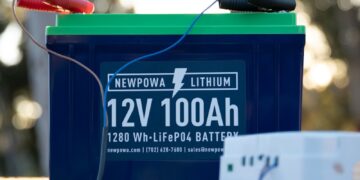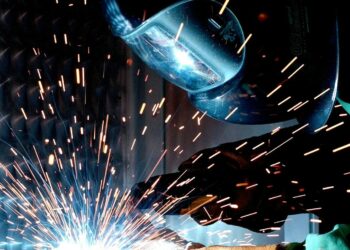Across the industrial heartland of California and beyond, manufacturers are facing a new reality: energy is no longer just a utility expense — it’s a strategic variable. With rising utility rates, grid instability, and a rapidly changing regulatory and economic landscape, energy is becoming a differentiator between companies that survive and those that lead.
And some are already leading the charge.
This is especially true for energy-intensive sectors such as metal fabrication, wire manufacturing, and industrial processing, where margins are tight and uptime is critical. These industries are uniquely vulnerable to energy volatility — but also uniquely positioned to benefit from the clean energy transformation.
The Case for Clean Energy Is No Longer Just Environmental — It’s Financial
Let’s start with the numbers. California’s average commercial electricity rates have risen more than 80% in the past decade, with industrial peak rates often exceeding 20¢ per kWh. For large-scale facilities running multiple shifts and high-load equipment, that adds up to millions in annual utility costs — with very little predictability.
But today’s market presents a rare convergence of opportunity:
- Federal tax incentives that cover 30–50% of renewable energy system costs
- Low-cost financing and Energy-as-a-Service (EaaS) models that require no upfront investment
- Technological advancements in battery storage and cogeneration that provide flexible, resilient power
- Customer and supplier ESG pressures that reward energy leadership
This isn’t just about going green. It’s about financial stability, operational resilience, and long-term strategic value.
Industry Leaders Making Moves: Southwire, Encore Wire & Beyond
Leading companies in the cable and wire space have already recognized this shift.
Southwire, one of the largest wire and cable manufacturers in North America, has committed to using 100% renewable electricity in its U.S. operations by 2025. The company is deploying on-site solar arrays, enhancing energy efficiency, and investing in grid-edge technologies to support sustainability and lower energy costs. These efforts are aligned with their larger mission to be a growth-oriented, environmentally responsible manufacturing leader.
Similarly, Encore Wire, based in Texas, has embraced operational excellence with an energy-conscious approach. Its integrated campus features efficient systems designed to minimize waste and maximize output — and though Texas offers a different energy landscape, Encore is leveraging its position to adopt cost-saving technologies, including solar and advanced monitoring systems.
What these companies understand is that energy strategy is now core to competitiveness. By locking in predictable energy pricing, accessing tax incentives, and improving ESG performance, they’re staying ahead of the curve.
Davis Wire: A Quiet Leader With Untapped Potential
While not always in the sustainability spotlight, Davis Wire is a respected player in California’s manufacturing economy. For decades, the company has supplied welded wire mesh, fence wire, and industrial-grade materials for agriculture, infrastructure, and construction. Their products are essential, and their legacy is built on consistency, quality, and scale.
Being based in California, Davis Wire operates in one of the most advanced — and challenging — energy environments in the country. This presents both risk and opportunity.
What makes Davis Wire interesting in today’s energy landscape is the sheer amount of load flexibility that facilities like theirs offer. With heat treatment, galvanizing, and heavy machinery driving large demand, they’re uniquely positioned to benefit from behind-the-meter energy solutions that reduce their grid dependency and cut operating costs.
This isn’t about a dramatic pivot or PR campaign. It’s about exploring options that match operational needs — and making smart, data-driven decisions to secure their future in an energy-constrained economy.
The Technologies That Make It Possible
1. On-Site Solar Power
Solar arrays, mounted on facility rooftops or adjacent land, can offset 10–60% of a manufacturer’s daytime energy load. In California, where solar irradiance is abundant and utility rates are high, the economics of solar are especially favorable.
2. Battery Energy Storage Systems (BESS)
Modern battery systems enable time-of-use shifting, demand shaving, and backup power during outages. For facilities exposed to high demand charges or at risk of blackouts, batteries can save hundreds of thousands annually — and in some cases, allow participation in grid services markets.
3. Co-Generation (CHP)
Combined heat and power systems, especially those fueled by natural gas or renewable biogas, allow facilities to produce electricity and useful heat simultaneously — ideal for operations like galvanizing or steam-based processing. Co-gen improves efficiency and can operate independently of the grid.
4. Energy Monitoring & Controls
IoT sensors and real-time energy monitoring platforms now allow facility managers to see granular usage data, detect inefficiencies, and automate savings through intelligent load management.
The Incentives Are Too Good to Ignore
Thanks to the Inflation Reduction Act (IRA) and updated Investment Tax Credit (ITC) rules, companies can now access:
- 30% base tax credit for solar, storage, and co-gen systems
- Up to 50% credit with additional qualifiers (domestic content, low-income, energy community, prevailing wage)
- Bonus depreciation (80% in 2025, then phasing down)
- Direct pay and transferability, allowing non-taxable or limited-liability firms to monetize credits
- Grants and utility rebates layered on top
This environment has created a once-in-a-generation opportunity for large manufacturers to install energy systems with paybacks under 3 years — or, with EaaS models, with no capital at all.
Enter Pacifico Energy: A Partner in Industrial Energy Strategy
Pacifico Energy, based in California, is one of the few firms that not only understands these technologies, but also delivers, operates, and fully finances them for industrial clients. With a strong track record across agriculture, cold storage, food processing, and manufacturing, Pacifico offers a streamlined process:
- Free site assessments to evaluate savings and system sizing
- Custom energy modeling to maximize incentive stacking
- Turnkey development including permitting, engineering, construction
- Zero-upfront cost models, with Pacifico owning and maintaining the system
- Long-term service agreements, often delivering energy at 10–30% below current utility rates
For companies like Davis Wire — or any California-based industrial operator — working with a trusted energy partner like Pacifico means turning a cost center into a strategic advantage.
Final Thoughts: The Window Is Narrowing
The clean energy shift isn’t a matter of if — it’s happening now. And while the current incentive landscape is generous, it’s also temporary. ITC bonuses begin phasing down in the next few years. Grid reliability is expected to worsen before it improves. And those who delay may find themselves at a competitive disadvantage.
Davis Wire and its peers have always been strong operators. What’s needed now is strategic energy leadership.
Whether it’s solar, battery storage, or co-gen, the path forward is clear — and there’s never been a better time to explore the options.
Interested in understanding what your facility could save — or earn — through clean energy?
Pacifico Energy is currently offering no-cost energy strategy assessments for qualified industrial operators.
Learn more at www.pacificoenergy.com or contact their industrial development team directly.



















